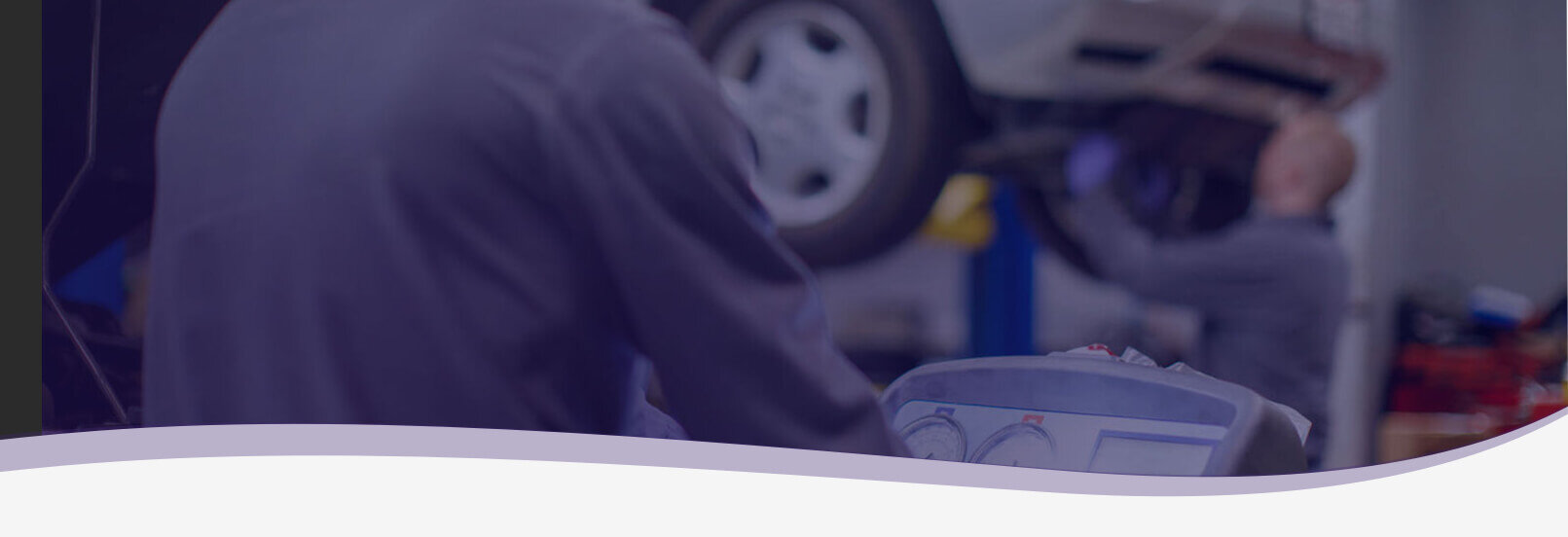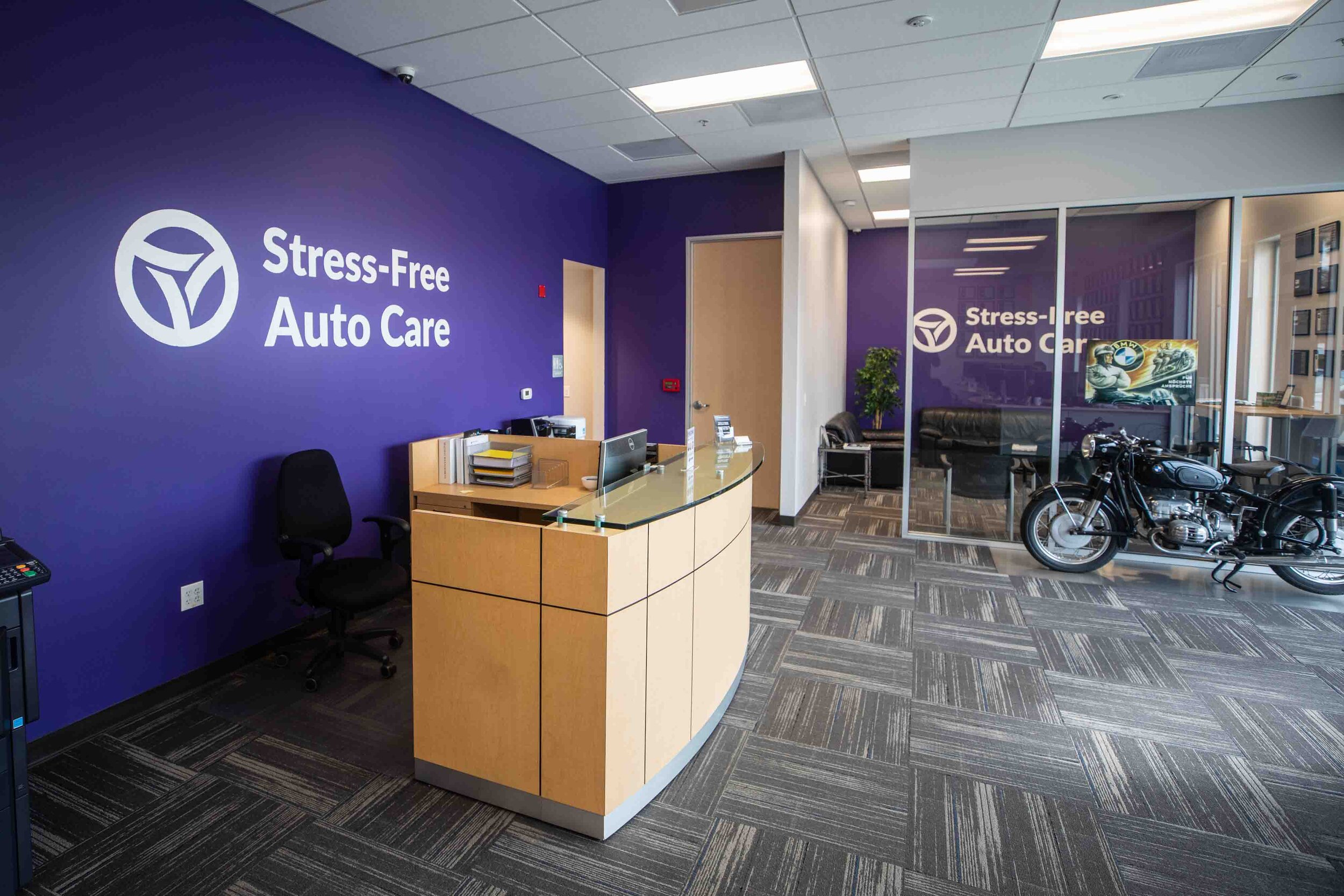
Stress-Free Auto A/C Repair and Recharge Services Near You
Your Destination Choice for AC
The air conditioning unit, especially in vehicles with dual-control systems, is a common fault in most cars. Whether you no longer can control temperature in the cabin, are experiencing an odor, or simply are not able to turn on the unit, bringing your car to a trusted technician is essential. Our industry-leading technicians at Stress-Free Auto Care have all the knowledge and infrastructure necessary to properly diagnose and fix your issue, getting you back on the road, stress free.
Stress-Free Advantage
Transparent Pricing
Text Updates
Digital Inspections with Pictures
Live Video Feed of Your Repair
Pay By Text Available
AC NOT BLOWING COOL AIR?
Evacuate and Recharge A/C System (R134a)
$249 - $279
The price would increase if your vehicle requires additional or special refrigerant such as R1234-yf. Leak repair or fixing abnormal problems may incur additional charges.
Typical service length: 60 - 90 min
Assuming you have an appointment.
Air Conditioner FAQs
Evacuate and Recharge AC FAQs
POOR AIR FLOW? BAD SMELL FROM VENTS?
Cabin Air Filter Replacement
$25 - $79
94% of vehicles fall within this price range. Price variation may result for premium filters and/or additional time required to replace the filters.
Typical service length: 10 - 30 min
Assuming you have an appointment.
Cabin Air Filter FAQs
Book Online and Save
Apply any of the following coupons when making an online appointment and save.
Individual coupon cannot be redeemed or combined with other offers.
AIR CONDITIONER
+ How do I know if I need to evacuate and recharge my air conditioning system?
Usually when someone's air conditioning breaks, the system still blows air, but that air is not cold. The most likely cause is a refrigerant leak, but it could be another issue, such as a faulty air conditioning compressor.
Either way, we recommend an "evacuation and recharge" process. It includes the following:
Evacuate the refrigerant lines to see how much refrigerant there is remaining in the system, and to make sure we have a clean system.
Fill the system with brand new refrigerant to specification
Insert a color dye which will help more easily reveal the source of the leak
If the leak is very small, then it may not be observed for many months from now. If the leak is catastrophic, then the refrigerant may not last more than a few minutes while the car is still in the shop. In either case, the evacuation and recharge process will help us determine the best next steps, and in the case of a very minor leak, you may actually be all done for a while.
If you don't have a leak at all, the evac and recharge process will still allow the technician to observe the system try to operate in an ideal environment, and help indicate the next spot to look. For most AC repairs, you would need a recharge anyway, so it's also probably a relevant repair.
+ Could it be something else?
Sure, it could be an issue with the blend door or blower motor. The symptoms for these issues are usually a bit different. If your air conditioning isn't blowing any air at all, then the issue could be the blower motor, which might be diagnosed differently. If it's blowing hot air instead of cold air, then the issue could be a blend issue, which helps your heating and air conditioning system switch off between hot and cold air. For both cases, it might be that the technician still needs to start with an air conditioning evac and recharge to find the issue; your service advisor is probably the best person to ask about your specific case.
+ A local mechanic quoted me a really low price for an A/C diagnostic?
Yes, we have found that some places offer low cost AC diagnostic, but those are generally visual only, and then end up recommending a more expensive evac and recharge. At Stress Free Auto Care, we think it is important to be as transparent as possible, so we present the full evac and recharge cost from the outset.
EVACUATE AND RECHARGE AIR CONDITIONER
+ What is an evacuation and recharge of the air conditioning system?
An evacuation and recharge of the air conditioning system involves the removal of all refrigerant from the system, placing it in a vacuum and inspecting for leaks before recharging the system with the correct level of refrigerant. There is often a dye added to assist in detecting leaks.
+ How do I know if I need the service?
Any time you repair or replace the air conditioning unit, you must evacuate and recharge the system. When the unit is removed from the car, outside moisture can enter the system and disrupt performance if it freezes inside the system.
+ How long does the service take?
Evacuating and recharging the air conditioning system takes about 60 to 90 minutes.
CABIN AIR FILTER
+ What is a cabin air filter?
Since the late 1990s, more and more vehicles have become equipped with cabin air filters. In 2017, it’s very difficult to find a vehicle that doesn't come with one. A cabin air filter cleans the air that gets used by the climate control system on a vehicle – the air that drivers and passengers breathe when inside the vehicle. Cabin air filters can come in two primary styles: a dust/pollen filter that traps particles in the air, and a charcoal media filter, which in addition to trapping particles in the air also helps reduce unpleasant odors from outside of the vehicle. A dust/pollen filter can be found on most modern vehicles, while a charcoal filter is usually found on higher end vehicles. Most vehicles with dust/pollen filters can upgrade to a charcoal filter if desired.
+ Why is this important?
Since the late 1990s, more and more vehicles have become equipped with cabin air filters. In 2017, it’s very difficult to find a vehicle that doesn't come with one. A cabin air filter cleans the air that gets used by the climate control system on a vehicle – the air that drivers and passengers breathe when inside the vehicle. Cabin air filters can come in two primary styles: a dust/pollen filter that traps particles in the air, and a charcoal media filter, which in addition to trapping particles in the air also helps reduce unpleasant odors from outside of the vehicle. A dust/pollen filter can be found on most modern vehicles, while a charcoal filter is usually found on higher end vehicles. Most vehicles with dust/pollen filters can upgrade to a charcoal filter if desired.
+ What can go wrong?
A plethora of things can commonly impact a cabin air filter, but the biggest item is routine maintenance. This filter is designed to be changed every other year, or between 15,000 and 20,000 miles depending on the vehicle manufacturer. Every time the fan, heater, or air conditioning is active in the vehicle, the cabin air filter is hard at work, and can quickly become saturated with particles from the air. Some climates will require replacement of this filter far more often than specified by the manufacturer, especially if there is lots of dust, pollen, or dirt in the air. Additionally, people who park under trees generally find more leaves and tree debris in their filters than those who don’t park under trees – this debris can clog the filter quickly.
Aside from routine maintenance, it is common in areas with high rodent concentrations for mice and rats to find their way into the fresh air intake duct, and make a home near or in the filter media. This sometimes has ramifications beyond simple filter replacement, but if applicable, the filter media should be inspected for signs of rodent infestation during changing. If a strong foul smell is present, the filter should also be inspected for remains of rodents. Other small critters occasionally find their way into the fresh air intake, and make their home in or around the cabin air filter.
Lastly, a large amount of biomass (plant debris) saturating the filter media can lead to unpleasant odors over time.
If you notice any abnormal smells from your vehicle's climate control system, changing the filter can rectify the situation. In some cases, additional air treatments can assist with removing stronger odors.
+ How do I know if it needs work?
The most common symptoms that suggest the cabin air filter needs attention are foul smells, and restricted airflow from the climate control system. Also, the cabin air filter is listed in the maintenance schedule on all vehicles, and periodically is scheduled for replacement in combination with other routine service items.
+ How much does it cost and why?
Most cabin air filter can be replaced in less than 30 minutes by a professional automotive technician. Some filters are so easy to replace, a shop might not even have a labor charge to change the filter during your visit.
Depending on the type and quality cabin air filter you would like to purchase, you could pay as little as $20 for a basic dust/pollen filter, to around $100 for a charcoal media filter. Some vehicles also use two individual filters, which doubles the price for replacement purposes.
Stress-Free Auto Care
Instant online booking.Limited waiting time in the shop.Pay up to 30% less than the dealership.






